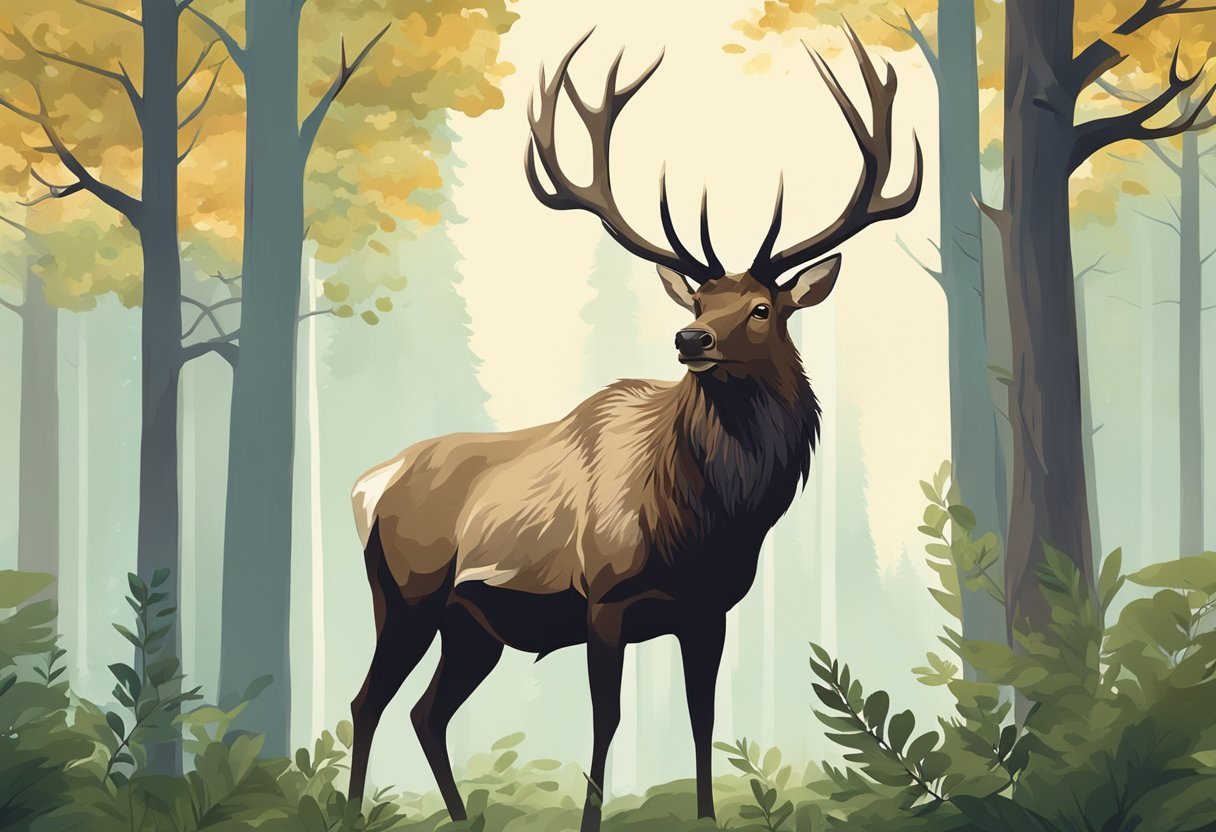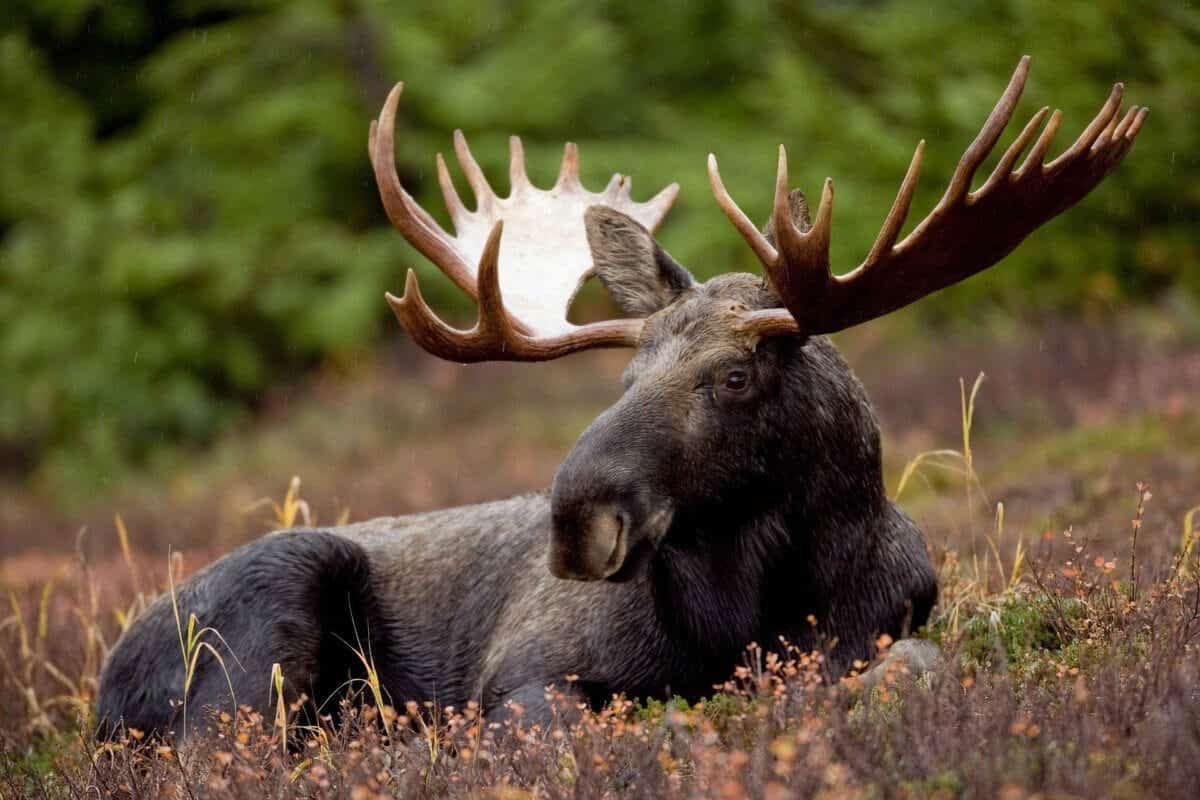A moose is larger with distinctive palmate antlers, while an elk is smaller with branched antlers. In North America, moose and elk are iconic members of the deer family, often mistaken for one another due to their similarities.
However, their contrasting sizes and antler structures set them apart in the wild. Moose, known for their massive size and palmate antlers, primarily inhabit northern forests, while elk, smaller with branched antlers, roam grasslands and woodlands. Both herbivores play crucial roles in their ecosystems, contributing to biodiversity and ecosystem balance.
Understanding the differences between these majestic creatures helps in conservation efforts and fosters appreciation for the unique characteristics of each species.
Moose Vs. Elk: Physical Characteristics
When comparing moose and elk, their physical characteristics play a key role in distinguishing between these majestic creatures. Let’s delve into the differences in size and weight as well as the unique features of their antlers and bodies.
Size And Weight
Moose: Moose often stand taller than elk, reaching heights of over 6.5 feet at the shoulder.
Elk: Elk are slightly smaller than moose, typically standing around 5 feet at the shoulder.
Antlers And Body Features
Moose: Moose boast broad, palmate antlers that can span up to 6 feet in width.
Elk: Elk have more slender, pointed antlers that branch out elegantly with distinct points.
Habitat And Range
Moose and Elk have distinct preferred environments and geographical distributions.
Preferred Environments
- Moose: Coniferous forests near lakes and marshes.
- Elk: Open woodlands and grasslands.
Geographical Distribution
| Species | Range |
|---|---|
| Moose | North America, Europe, Asia |
| Elk | North America, Central Asia, Northeast Asia |
Diet And Feeding Behavior
The diet and feeding behavior of moose and elk vary significantly, impacting their foraging habits and seasonal variation in diet.
Foraging Habits
Moose are predominantly browsers, meaning they primarily feed on leaves, twigs, and bark, while elk are more varied in their diet, consuming grasses, forbs, and shrubs. This distinction in foraging habits is a result of their respective habitats and physiological adaptations.
Seasonal Variation In Diet
Both moose and elk exhibit seasonal variations in their diet. During the spring and summer months, elk tend to focus on consuming grasses and leafy plants, while moose divert their diet towards aquatic plants and woody browse. In the winter, both species rely on woody browse and twigs due to limited availability of other food sources.

Credit: discover.texasrealfood.com
Reproduction And Life Cycle
Understanding the reproduction and life cycle of animals is crucial for comprehending their behavior and ecological importance. When it comes to the moose and elk, these majestic creatures have fascinating differences in their mating behavior, growth, and development. Let’s explore the distinct aspects of their reproductive cycles and life stages!
Mating Season
In the world of moose and elk, the timing and dynamics of the mating season play a vital role in the continuation of their species.
Moose: These impressive mammals enter their mating season, also known as the rut, during the fall. Male moose, known as bulls, engage in fierce battles, using their antlers to establish dominance and earn the opportunity to mate with receptive females, called cows. The vocalizations and distinctive antler displays of the males during this period are captivating to witness.
Elk: Unlike moose, elk have a slightly different timing for their mating season. Typically, elk engage in their rut during the late summer or early fall. Bulls engage in dramatic displays, including bugling calls and elaborate posturing to assert dominance over other males. The cows, on the other hand, select the strongest and most impressive bulls as mates to ensure the vitality of their offspring.
Growth And Development
Observing the growth and development of moose and elk from birth to adulthood is truly a remarkable spectacle. Let’s delve into the distinct stages these magnificent animals go through:
- Birth: Both moose and elk give birth to young ones, known as calves. Mothers often find sheltered areas to protect their calves from predators.
- Early Life: During the early stages, calves rely on their mothers’ milk for nourishment and rapid growth. They stay close to their mothers and learn essential survival skills.
- Adolescence: As moose and elk enter adolescence, their rapid growth continues, and their antlers begin to develop. This period is critical for establishing social hierarchies and learning adult behaviors.
- Adulthood: Once mature, moose and elk fully develop their characteristic antlers, which play a pivotal role in various aspects of their lives, such as mating, defense, and dominance.
The growth and development of moose and elk are influenced by genetics, nutrition, and environmental factors, all of which contribute to their remarkable physical transformations.
Behavioral Contrasts
In order to understand the difference between a moose and an elk, it is important to examine their behavioral contrasts. These two majestic creatures may appear similar at first glance, but when observing their social structure and migratory patterns, distinct differences emerge.
Social Structure
The social structure of moose and elk varies significantly. Moose, being solitary animals, prefer a more independent lifestyle. They often wander alone and do not form herds or packs like other ungulates. On the other hand, elk are highly social creatures. They typically gather in large herds, maintaining a hierarchical structure led by a dominant bull.
To visualize the social order of elk herds, a table can be used:
| Social Hierarchy | Description |
|---|---|
| Dominant Bull | The leader of the herd, responsible for mating and protection. |
| Cows | Females within the herd that reproduce and care for the young. |
| Young Bulls | Males that are not yet mature enough to challenge the dominant bull. |
Migratory Patterns
The migratory patterns of moose and elk also present notable differences. Moose are known to be sedentary creatures, often staying within a specific territory. Their movement is primarily influenced by the availability of food and water sources. In contrast, elk are migratory animals, covering vast distances in search of suitable habitats and food. They undertake large-scale seasonal migrations, traveling long distances to reach more favorable grazing areas.
This can be summarized in the following points:
- Moose are sedentary and do not migrate.
- Elk undertake seasonal migrations to find better grazing areas.
By understanding these behavioral contrasts, we gain a deeper appreciation for the unique characteristics of moose and elk. While moose prefer solitude and localized habitats, elk thrive within social herds and embark on impressive migratory journeys.

Credit: www.jeffwendorff.com

Credit: fastercapital.com
Frequently Asked Questions For What Is The Difference Between A Moose And An Elk
What Are The Main Differences Between A Moose And An Elk?
Moose and elk may appear similar, but they have distinct characteristics. Moose are larger and have a bulbous nose, while elks have a more slender build with a pointed nose. Additionally, moose are solitary creatures, whereas elks are usually found in herds.
Are Moose And Elk The Same Animals?
No, moose and elk are different species of animals. While they are both members of the deer family, they have unique characteristics that set them apart. Moose are known for their massive size and distinctive antlers, whereas elks have a more slender build and branched antlers.
Where Can I Find Moose And Elk?
Moose and elk can be found in various regions around the world. Moose are commonly found in forests and wetlands of North America, Europe, and Asia. On the other hand, elks are native to North America and can be found in grasslands, forests, and mountains in the United States and Canada.
What Do Moose And Elk Eat?
Moose and elk have slightly different dietary preferences. Moose are herbivores and primarily feed on leaves, twigs, and aquatic plants. They are often seen grazing in marshy areas. Elk, on the other hand, are also herbivores but focus on grasses, leaves, and shrubs found in open meadows and woodlands.
Conclusion
In essence, understanding the difference between a moose and an elk is crucial for any wildlife enthusiast. With their varying physical traits and habitats, these majestic creatures offer unique characteristics. By learning to recognize and appreciate these differences, we can foster a deeper connection to the natural world around us.



